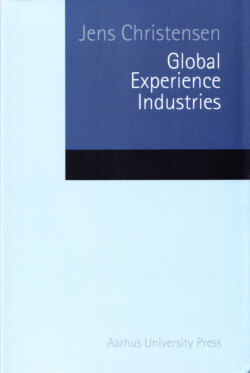Читать книгу Global Experience Industries - Jens Christensen - Страница 49
На сайте Литреса книга снята с продажи.
Cuisine
ОглавлениеWhen travelling one naturally enjoys the cooking traditions and practices of the destination.100 Everywhere cooking or ‘cuisine’ is associated with a specific culture. A cuisine is primarily influenced by the ingredients that are available locally and through trade, which also includes beverages, such as wine, liquor, beer, tea and coffee. Enormous improvements in food production, preservation, storage and shipping has given almost everybody access not only to the local cuisine but also to many other cuisines of the world. As a consequence, cuisines everywhere are typically a combination of local traditions and international cuisines. The ‘fusion cuisine’ is a term for developments in many contemporary restaurants that combine elements of various culinary traditions.
Some cuisines have strongly influenced many other national cuisines even to the extent of a global reach. Such internationally spread cuisines are the Chinese and Indian cuisines, mainly following the international settlement of Chinese and Indians in Southeast Asia and other places of the world. In the Western world, American burgers spread with the expansion of the McDonald’s fast food chain and then, even elsewhere, mainly to emerging countries. The Italian pizza and pasta dishes have become popular on a global scale, too. When it comes to fine cuisine, all Western cuisines are influenced strongly by French cooking techniques. The growing search for authentic experiences and quality food has stressed the importance of making food from local vegetables and meat. What might be called a ‘slow food’ movement has emerged as an alternative to the industrial like productions methods of fast food.
The world may be divided into several regional cuisines including many similar or related national and local cuisines. The Asian cuisine may be a term for various cuisines in East, Southeast and South Asia, based on staples such as rice and noodles accompanying dishes of vegetables, meat and fish.101 Rice is a vital component of many Asian cuisines, and in contrast to the cuisines of Northern Europe and the USA, or the Western cuisine in general, meat or fish are not considered the main ingredients of a dish, but more like most of the Mediterranean cuisines which are based on wheat-derived components such as pasta or cous cous. Asian dishes include various spices and are to a lesser or greater extent well seasoned. Chopsticks are the primary eating utensils, contrary to the fork and knife of Western cuisines. Soup is usually served at the start of a meal, but unlike most Western meals, an Asian meal does not typically end with a dessert. If it does, however, it may be sliced fruit or a sweet soup. The Latin American cuisine, which of course also is diverse, includes maize-based dishes (for instance tortillas), meat, spices, and beverages such as mate and horchata. The Latin American cuisine is a blend of all the many groups of immigrants and commercial influences from Europe, Africa, and North America. The US cuisine is a combination of the nation’s rich supply of almost every kind of food and beverage and strong European as well as African and Latin American cooking traditions.
Exploring national and local cuisines reveals how people originally adapted to local natural conditions to make a living and, later on, as industrialization took-off, combined local traditions with other cuisines of the world. Gastronomy is the term for the study of relationship between culture and food.102
